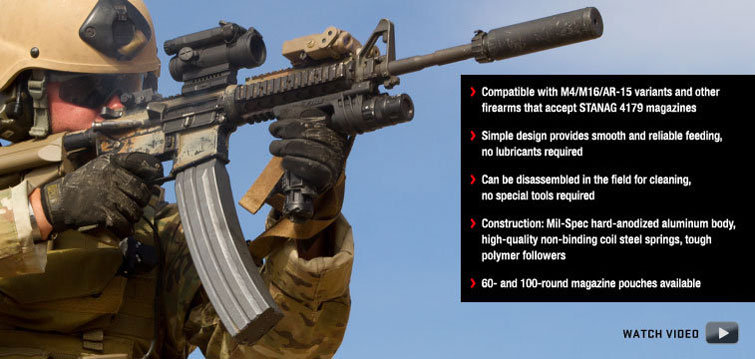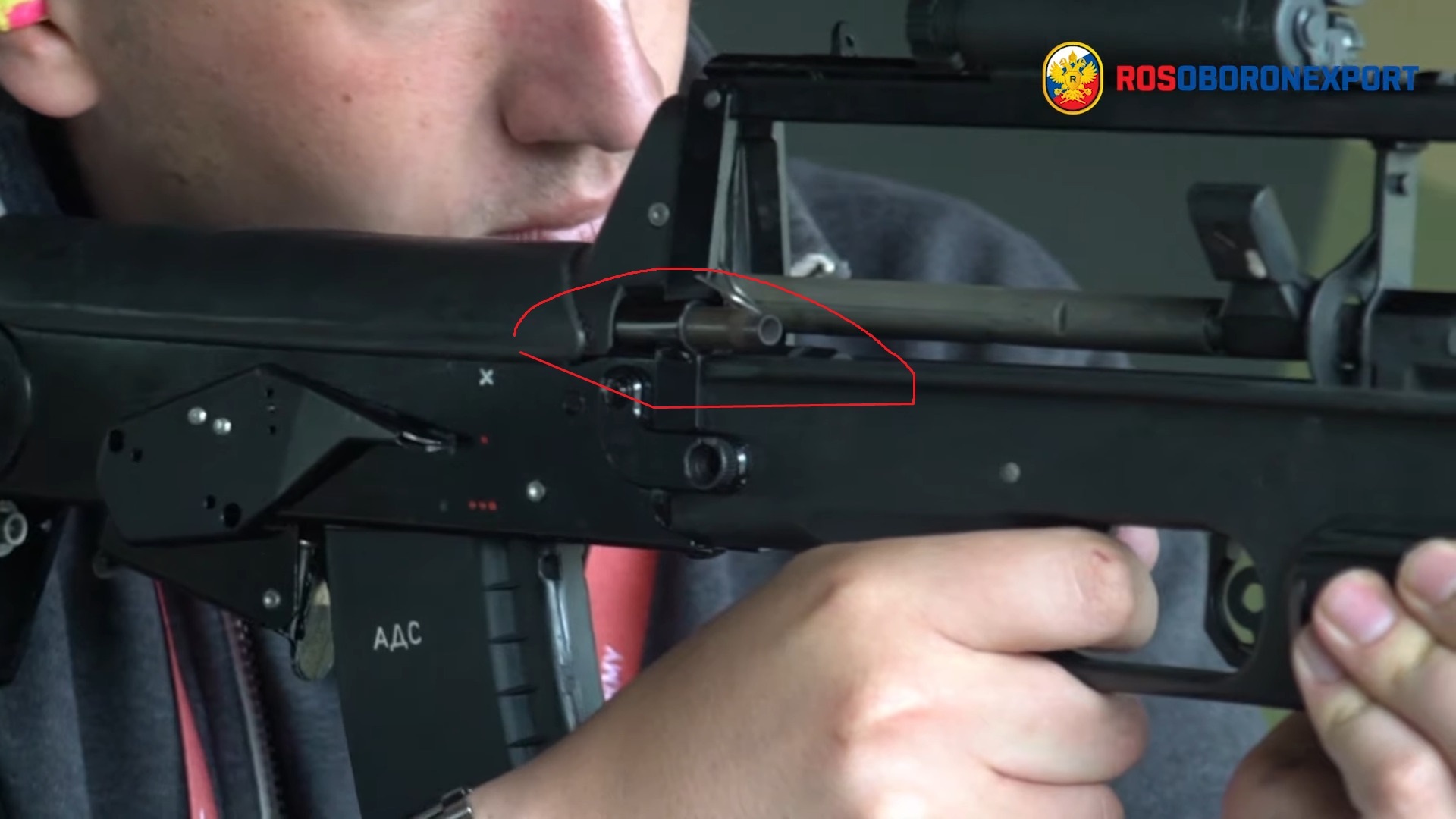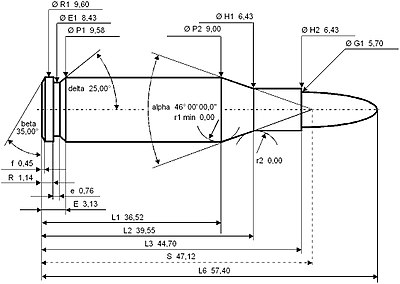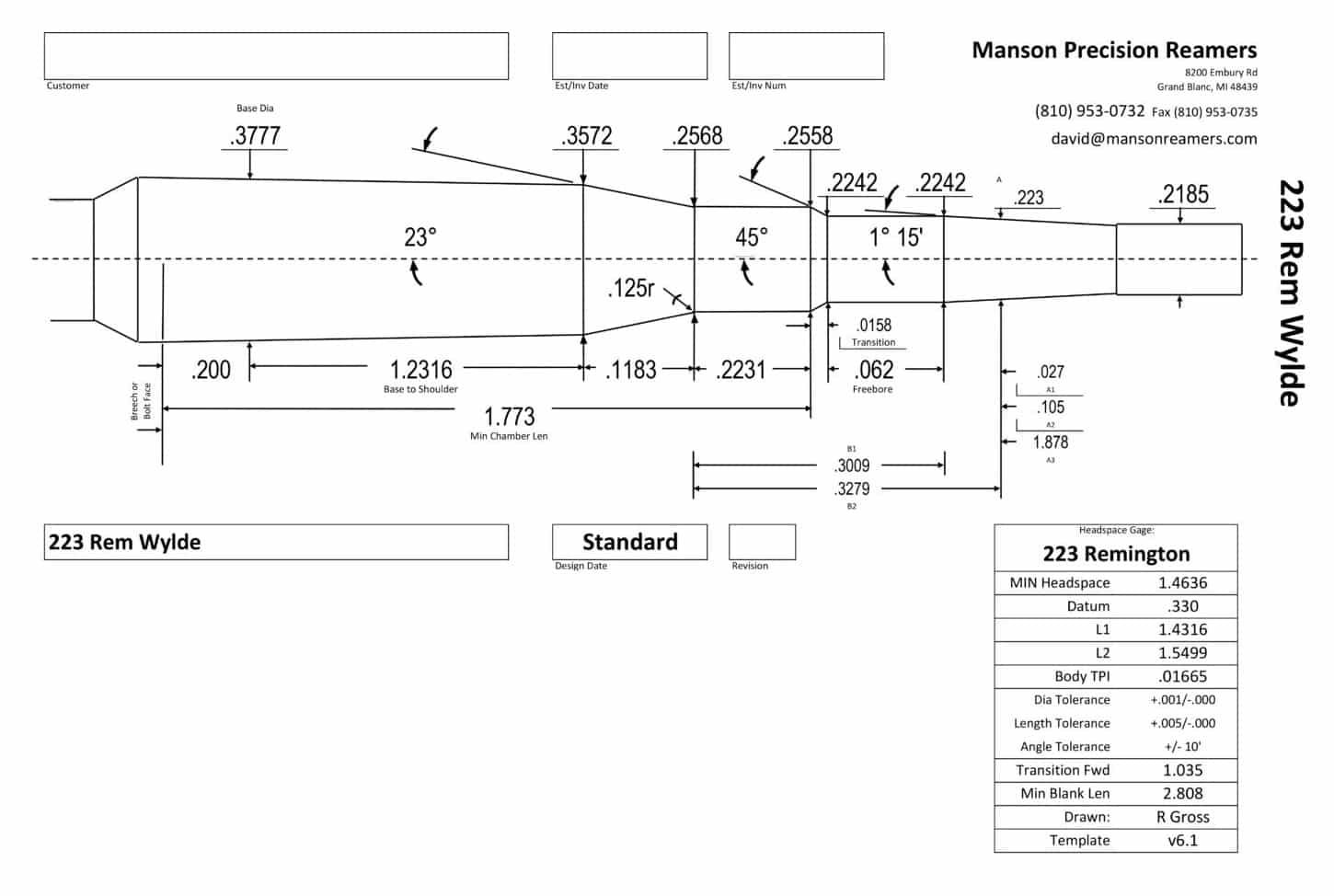I've just finished my mech eng diploma and to keep up solidworks and drawing practice thought I'd dust off my silly "Bullpuppest Bullpup" idea. It's not really for ever actually making, but just exploring weird ideas based on some workshop experience and watching a lot of Forgotten Weapons and other gun disassembly. It's loosely based on the TBK-022PM, the F-2000, and some of those weapons that turn the bullet from the magazine to chambering. Awful complicated mechanics all around.
Anyway, I was going to make it in 5.56x45 NATO as I'm in a NATO country and assumed that would be the easiest ammunition to get (as well as pre-cut M16 or AR-15 barrels or whatever, and I didn't want to fiddle with ballistics really). However, I've had a heck of a time finding the technical drawings for the round (STANAG 4178)/chamber/magazine well dimensions to design around. (Yes, apparently it's not actually an accepted standard, but it would be nice to have something to work around)
I've also noticed that a lot of the supplied technical drawings are very old scans of very old drawings, with almost unreadable dimensions (and are often incomplete). Every AK-47M drawing that I seem to find, something that I feel must have an abundance of drawings, seems to be a tiny grainy picture maybe with cursive Cyrillic written all over it or something. M16A1 etc seems to also. Also, a lot of drawings have one or two dimensions missing that would be trivial to measure and include in a 3D model.
So I thought it would be a good practice project for me to take some of these old drawings and after much examination, interpretation, and discussion (and potentially measuring actual objects), reproduce the drawings in a very clear and readable format. The actual making of 3D models (especially if they are traditionally machined parts) does not take very long once dimensioned, and I can upload them here or where-ever. Solidworks is actually pretty intrusive with what details about your computer it includes in drawings/parts, so probably PDFs until I can work out how to scrub everything with the Admin tool SW has (if possible, hexeditors maybe).
I'm also pretty open to just changing the ammunition/magazine standard etc. to whatever, even a made up one. Can't do any physical testing, but would work fine for a "fantasy" gun for like... idk, an imaginary modern soviet Industrial Concern. The US Army seems to want its funny high powered 277 Fury with the stainless case base (is that really the best way of doing things).
It's also fine to roleplay as an engineer or end user with complaints and stuff around the design, but don't get too heated about it. This is mostly just a project to whet teeth on and get brain juices flowing.
What do I want from gun nerds? Interpretation of technical drawings Measurements for real parts (e.g. I could not find the STANAG magazine feed lip dimensions or how far the catch is from the lips etc, some parts could be reverse engineered based on the size of the round). Access to lots of parts is impractical, so we'd basically guess and decide what the tolerances were based on other parts. Design suggestions/comments (mostly for fun, this is a very silly design)
What does everyone get? Up to date, modern technical drawings with cut lists, welds, BOM, 3D modelled parts, tolerances (where possible) without having to squint at tiny pictures of scans and cursive cyrillic. I'm happy to do extra models/drawings for whatever "base gun" we're building off; models/drawings are pretty easy once details are finalised.
Current Decisions: Ammo/magazine standard. Probably based on ease of getting drawings, dimensioning, or models, but if there's an interesting set of old drawings we can use that as a standard we can go with that. Can hypothetically invent dimensions (and primers are standardised and interference fit, so that part is already "designed").
Odd features I'm including because I'm a weirdo (the absurd design is partly the point):
- Pulls ammunition from traditional AR sickle mag that runs almost parallel to the main length, turns the bullet 90°-ish, and shoves it into the chamber, thus maybe reducing the distance between the rear of the gun and the chamber.
- Funny membrane that pushes air out of the barrel when cycling
- Different funny membrane that has a filter (for dust) that allows air in but not out, and no water in
- Forward ejector for spent rounds (but like... yet another way of doing it)
- Different bullpup trigger/action
By the end, I hope to have something of an absurd rube goldberg machine wrapped up in a modern (or whatever aesthetic) shell. But that might be a couple of years down the line.
Notes:
- Could crib measurements from video game models for some looser fits maybe.
- I'm not above stealing other people's ideas, patented or not. But this is partly practice for me.
TBK-022PM
Have you seen the animation someone made of its operation? You might be familiar with it already, I just remembered it when you mentioned that gun (and it's just really cool anyway).
I guess in your case it'd be that combined with the P90 magazine idea. Something to note about those top magazines - typical rifle cartridges have a taper, which requires a curve in the magazine to accommodate - the P90 achieves its straight magazine by being chambered in the rare example of a modern straight-walled cartridge. So if you want to reuse an existing cartridge like 5.56, you'd have a magazine on the top of the gun that curves slightly to one side, which might look a bit weird (although there wouldn't be necessarily anything wrong with it it mechanically), especially when you get to higher capacities (since that's one of the points of having it be on the top):
Show
(this is also a quad-stack, but it's just to illustrate the greater curve of a high-capacity 5.56 mag, imagine something like that mag but lying flat on the top of the gun)
Forward ejector for spent rounds (but like... yet another way of doing it)
the Russian A-91/ADS rifle has an interesting simpler take on forward ejection - rather than having a tube above the barrel running most of the gun's length, you instead have a much shorter tube right above and in front front of the chamber, which ejects forward diagonally
Show
The US Army seems to want its funny high powered 277 Fury with the stainless case base (is that really the best way of doing things).
I think there's a lot of issues with that approach - compared to the current intermediate cartridges it's supposed to replace, the round is more expensive, weighs more, produces more recoil, causes more barrel wear (and apparently troops are going to train with a less-powerful loading of the round in order to prolong barrel life, which is rather silly - they'll get used to a softer-shooting round, and be handed one that kicks significantly more when they go into combat).
I think the reason for its adoption (beyond just MIC grifting) has to do with a fundamental difference in the doctrinal view of what the individual soldier is supposed to do (although note that I'm hardly an expert, these are just some musings I've had while wandering around the house) - namely that, in the American view, the rifleman should have his combat effectiveness absolutely maximized, thus he needs the biggest bestest round fired from the fanciest rifle with an even fancier optic that's going to do a bunch of the aiming for you (and of course adds even more to the cost).
The Soviet approach (which has since been inherited by the Russian military, and to some extent the PLA), on the other hand, accepts the compromise that the rifleman is going to be more limited in terms of range and firepower, and instead supplements him by increasing the proportion of heavier assets at the higher levels or organization. Yeah, your average guy with an AK can't shoot that far and can't penetrate the fanciest armor - and that's fine, since he's not supposed to. You have designated marksman's rifles (originally one per platoon, but as time went on their ratio increased, and these days some militaries are going into having one per squad), machine guns, rocket launchers, automatic grenade launchers that are light enough to actually be picked up and moved around the battlefield (contrast that to the Western Mk 19's 35 kilograms, over twice as heavy, and mostly relegated to being mounted on vehicles), even lighter magazine-fed grenade launchers in China's case, and so on.
This seems like a much more sensible (and economical approach) to me. The American (and more broadly Western) approach is also reflected in things beyond infantry equipment - see the F35, which is supposed to do absolutely everything in a single platform (and predictably, doesn't seem to be managing it that well), or Western tank design philosophy compared to the Soviet one. It's almost like the side that actually did the hardest fighting in WW2 learned some lessons, while the West, for whatever reason, decided to pick up the doctrine and thinking of the Nazis... who lost the war (although I guess it's really just a reflection of material conditions - the side with the smaller manpower reserve and decaying industrial base is going to inevitably start looking for wunderwaffe tricks to increase the effectiveness of it's smaller military - the "there might be less of us, but each one of us is worth 10 of their guys!" style of thinking)
I found a YouTube link in your comment. Here are links to the same video on alternative frontends that protect your privacy:
H&K's "kraut space magic" G11 used a clockwork component to rotate and load its rounds; check out US patent #3997994
G11 is a super interesting clockwork design. THere's also the P90. Both of them have a circular bolt (or a circular... Bullet travel mechanism). Because I'm probably using a longer round, that would use up a lot of space, so I'm looking to pare down the mechanics of it (e.g. compared to the G11, reducing parts, paring down reciprocating gears to just minimalised arms etc). The g11 wound up being quite tall and boxy given the size of the round fired.
Different funny membrane that has a filter (for dust) that allows air in but not out, and no water in
(Some) Tyvek(s) & goretex both do that, but do significantly restrict airflow and can/will clog and lose efficacy over time
Filters do need to get replaced over time. I was going to use a silicone flap with an external plastic housing that bites the silicone when you submerge the gun. It's not going to stay super sealed by any stretch, especially if you get deeper, but it will help quite a lot despite also allowing the system to breath. There'd be a separate thin filter for silica particulates (doesn't have to be N95). I think the whole housing would actually be pretty cheap as an injection mold plastic (Nylon 6, no need for glass fiber because its a little seal that takes about as much pressure as a snorkel) (Nylon 66 doped with about 30-40% glass fiber is "composite" in gun language, idk if carbon fiber as a product has made any headway into gun production). Basic parts list is silicone circle, the water filter (a plastic clamp that depresses if its under too much outside pressure, biting the silicone and stopping it from flapping), a relatively thin breathable filter (it only needs to work when the gun is firing, unlike an engine filter that has to run for hours at a time), and a plastic housing to hold all three together, and they slot in at the front of the gun.
I was looking at goretex for a "tacticool poncho" (with internal ridges, to allow air to move up past your torso and out behind your head!), but it's actually kind of annoying to source particular patterns and it while it does breathe a little bit, probably not enough for this purpose:
The other breathing membrane (basically, a one-way silicone valve that rides with the bolt's guide arms) basically pushes most of the internal air inside the gun out through the barrel while the bolt is unlocked. The idea is every time you shoot, you vent a bunch of the internal warmed air through the barrel, pushing out the very hot air from firing as well as various acidic propellant leftovers. Obviously, this venting also needs to pull air from somewhere, so it pulls cool outside air through the above filter. My hope is this breathing mechanism is actually quite cheap and light, with only a mild increase in complexity. No idea if it would pan out or have an effect, but that's the idea. Uses up the spare volume in the front part of the gun where it's mostly barrel, guide arms etc (of which there shouldn't be much, but having round components in a rectangular-ish chassis means you get spare volume, and the straight line from the rear of the gun to the front will leave some space too).
So there are definitely a ton of measurements and diagrams around for a basic 5.56 round. There should be plenty of STANAG magwell data to be pulled from
DEFCAD. Edit: I should have linked FOSSCAD instead.If there are any specific measurements you'd like of the round/magazine/an AR, I have rifles and calipers, and am willing to help.
These are just the first results for "223 Wylde chamber dimensions" and "5.56 cartridge dimensions":
Show Show
Show
223 Wylde is my preference, as it maximizes compatibility with 5.56 NATO & 223 Rem
That said, concerning yourself with actual chamber dimensions doesn't really matter until something's being made. I'd just treat the barrel&chamber as a magic cylinder that does what you need it to in the design, as the actual execution of chamber and rifling cutting is:
- buy barrel blank
- buy gun drill(s)
- buy rifling button
- buy chamber reamer
- drill baby drill
It's all gonna be done with very specialized tools rather than generic machine shop stuff.
There are some ways around this that the 3d printed firearm community is working on, such as ECM rifling.


